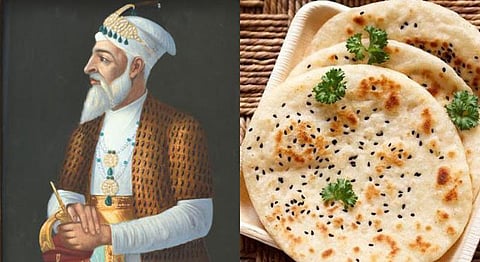
- HOMEGROWN WORLD
- #HGCREATORS
- #HGEXPLORE
- #HGVOICES
- #HGSHOP
- CAREERS
- ABOUT US
- CONTACT US

We all know that one person who loves bread more than life itself (if you don’t know one, it’s probably you) – the one who prefers the pav over the bhaji, the bhatura over the chhole and the bun over the stuffing. The obsession with the fluffy food is not a recent fad and has been rather popular in India for centuries.
We can guarantee, however, that this love was epitomised in the 1700s in the Asaf Jahi dynasty when the infamous kulcha was given a prominent spot on their flag!
The story of the simple bread earning its worth as the dynasty’s insignia is owed to the all-familiar Indian hospitality. Mir Qamar-ud-Din Khan Asaf Jah was a courtier at the Mughal court whose family had been serving the Mughals for years. After the renowned Mughal emperor Aurangzeb died, his plush and rich empire seemed to go downhill. Our protagonist Mir Qamar-ud-Din had much to say about the decline as he was quite unhappy with the state of things, and he was soon presented with an opportunity to be the Governor of Deccan. Nizam-Ul-Mulk, as he was titled, was all too eager to leave Delhi and its unsatisfactory empire management.
As Indian tradition goes, you must take blessings before beginning a new journey, and Mir Qamar-ud-Din did just that — He made his way to the Sufi saint, Hazrat Nizamuddin. Here’s where the inception of the flag took place. The host presented Mir Qamar-ud-Din with kulchas on a yellow cloth, and he devoured seven of them in no time. Following the fulfilling feast, Hazrat Nizamuddin posed a prophecy that Mir Qamar-ud-Din would serve as a king, and his empire would be ruled for seven generations, one for each kulcha he consumed.
(Un)surprisingly, the prophecy came to fruition. Mir Qamar-ud-Din after declaring independence from Delhi set up the Asaf Jahi dynasty in Hyderabad. In honour of the saint Hazrat Nizamuddin, the dynasty’s flag was made to be a yellow one (for the cloth the kulchas were served on) with a kulcha symbol on it! Mini Menon, in her book, Quirky History:: The Swan Car of Nabha & Other Unusual Stories from History (2020), adds that the kulcha insignia could be seen everywhere in princely Hyderabad including on the uniform buttons of the Nizam’s guards!
The yellow flag with the kulcha insignia waved proudly for seven generations as the seventh descendant decided to join the Indian Union.
In all honesty, if someone told us we would rule for generations to come, we wouldn’t hesitate from designating a type of bread to an insignia either!
If you enjoyed reading this, we suggest you also read:
